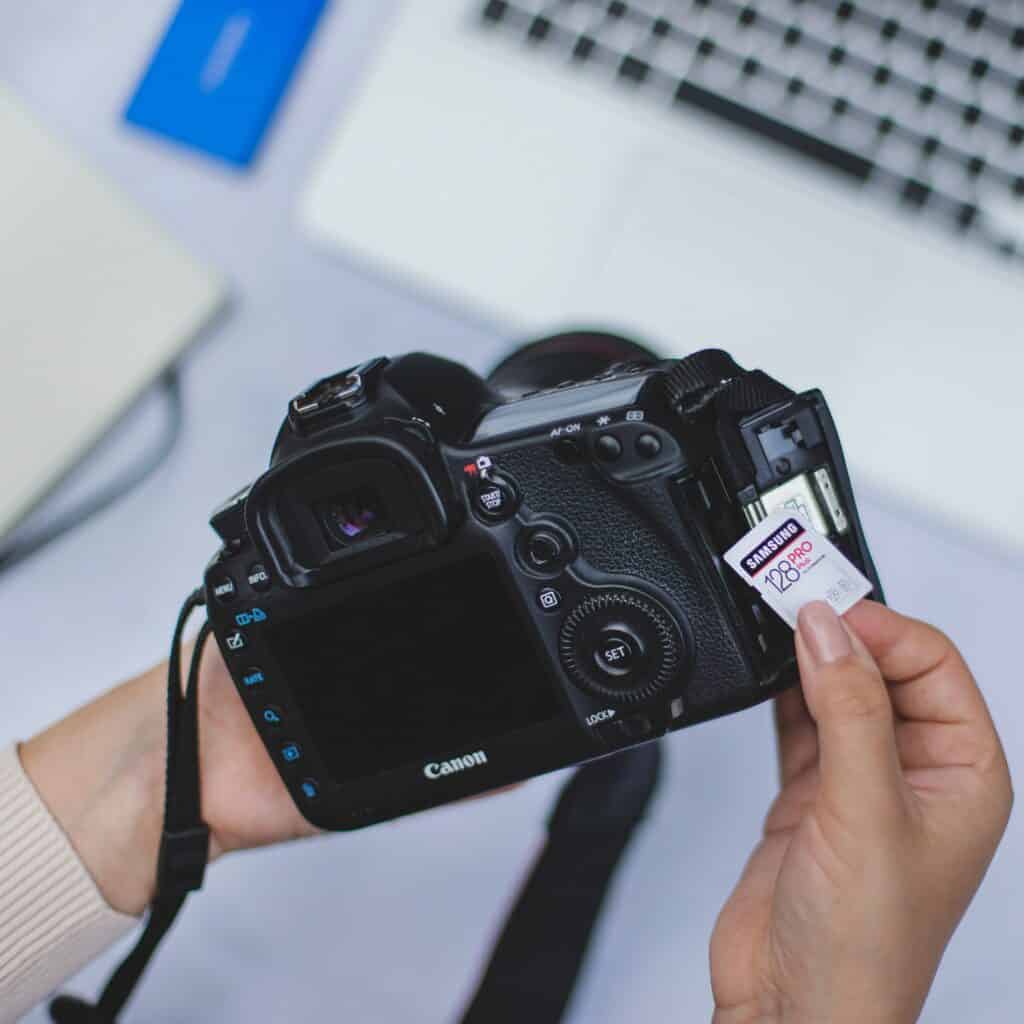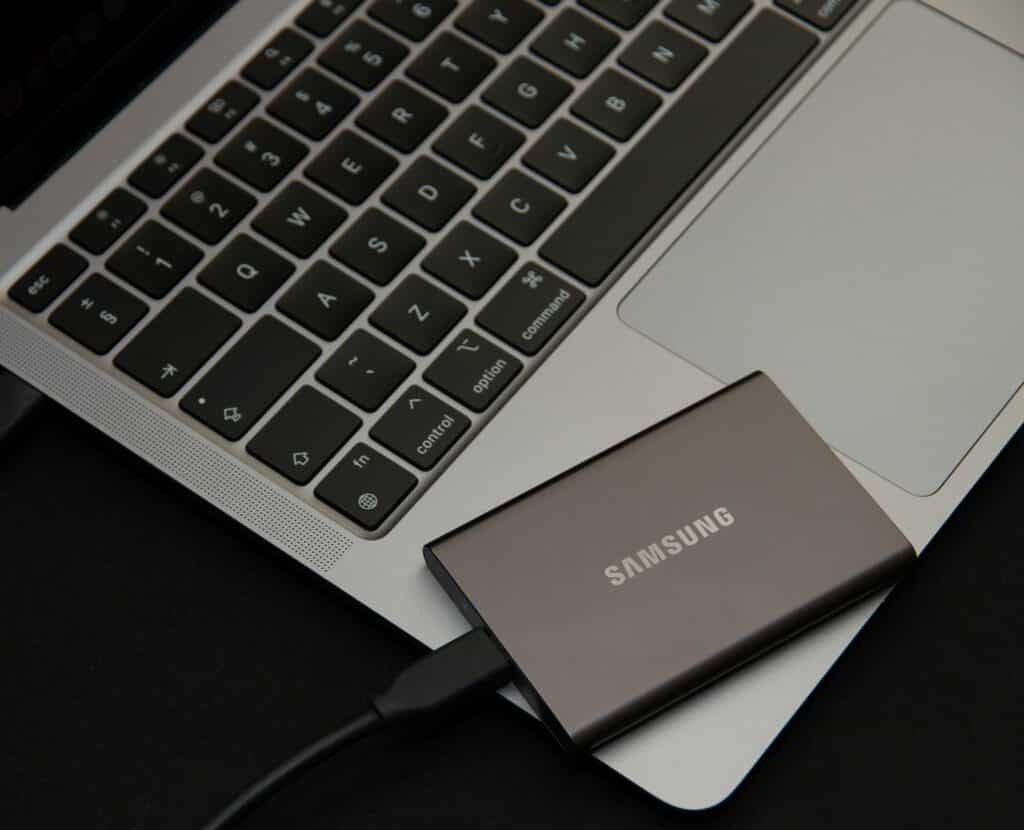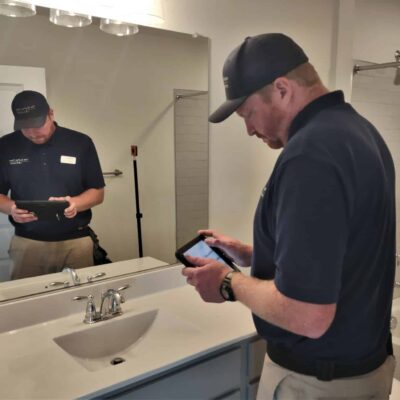Taking Inspection Photos: What’s your camera of choice?
Last Updated November 14, 2023

 If pre-inspection agreements are your first line of defense, inspection photos are a close second. Capturing what was (and wasn’t) there on inspection day, photos are one of the primary stumbling blocks to meritless accusations. As home inspector insurance providers, we at InspectorPro believe you cannot take too many pictures. After all, the more photos you take, the more evidence you have for your defense.
If pre-inspection agreements are your first line of defense, inspection photos are a close second. Capturing what was (and wasn’t) there on inspection day, photos are one of the primary stumbling blocks to meritless accusations. As home inspector insurance providers, we at InspectorPro believe you cannot take too many pictures. After all, the more photos you take, the more evidence you have for your defense.
But inspection photos aren’t just for you; they’re for your clients, too. Photos can help inspection clients understand and contextualize your findings. They can bring reports filled with descriptions and technical jargon to life. And photos can draw attention to important areas of concern that, if left unaddressed, could lead to problems later.
So what lies between you and the best inspection photos for your business and clients? Arguably it’s what you use to take them. What’s the best camera for home inspectors? It depends on what you’re looking for. We asked home inspectors what they use to take inspection photos and why. We then discuss some of the ways you can manage your risk against insurance claims while taking photos—regardless of which device you choose.
What cameras are inspectors using?
For anyone new to the industry, it’s hard to imagine relying on film to deliver inspection photos. But many home inspectors used to. In fact, just 50 years ago, it wasn’t uncommon to attach a single Polaroid photo of the front of the house to an inspection report and call it a day.
Now, with much more advanced camera technology and photo storage options available inexpensively, you’re able to take hundreds of photos of every home inspection.
In preparation for this article, we asked 65 home inspectors what devices they were using to take most of their inspection photos. We found that 60 percent use digital cameras, 26 percent use phones, and 14 percent use tablets.
The Case for Digital Cameras
The majority of inspectors we surveyed who opted for digital cameras did so due to their superior zoom capabilities and durability. Zoom comes in handy when magnifying defects or when you want to capture a system or component but it isn’t safe to get any closer to it. For example, there may be an attic you can’t traverse that has some worrisome water spots on the ceiling opposite the entrance. Or a roof that is unsafe to mount so you photograph it from your ladder.
“I can stand on the ground, 40 feet from the chimney cap and zoom into a single brick,” said Bill Hawkins of Hawkeye Inspection Service, LLC in Indiana.
Durability is an important consideration when your camera is likely to encounter water, dirt, and other debris on inspection sites.
“As inspectors, we go into areas of the home that are hostile to us and our equipment. We go under homes in the dust. We go into hot attics with high moisture. So our cameras must be somewhat tough,” said Michael Burroughs of QED Services in Louisiana.
Many inspectors advocate investing in a camera that can take a fall. After all, when you’re getting on ladders and roofs regularly, accidentally dropping your camera several feet isn’t far-fetched. Thus, surveyed inspectors encourage others to purchase shock-resistant cameras.
The Case for Phones and Tablets
Many of those who prefer phones and tablets use their inspection report writing software on the same devices. By taking photos in the same place, inspectors are able to add photos to their reports onsite. Even if you don’t add photos to your report at the same time, cloud technology may upload photos to your computer automatically, saving time.
“With the cloud, my photos are in my computer before I get home for the day. No more waiting for downloads,” said Ken Steverson of KS Home Inspection in California.
Some inspectors also argue that the high-definition, high megapixel images their phones take are clearer and more detailed than photos from many digital cameras. For example, Jameson Malgeri of Another Level Inspection, LLC in Massachusetts says his phone performs better than his camera in low light.
Lastly, inspectors appreciate how compact their phones can be when they want to take photos of hard-to-reach places, like behind appliances.
Limiting Your Liability
Whether you decide that a digital camera, a phone, or a tablet is the best camera for home inspectors, you can manage your risk against potential insurance claims in the following ways.
Know how to use it.
As with any tool, a camera is only as good as its operator. How you take photos matters most.
According to Bronson Anderson of Inspector Homes, Inc. in Virginia, using your camera strategically can help you take photos that tell a more detailed story.
“Keeping lighting and perspective in mind allows you to capture defects clearly,” Anderson said. “For example, if you have mold on a flooring system or wood paneling in a basement, taking a straight-on picture will not produce the results you want. Side lighting the paneling with your flashlight and taking the picture at an angle will produce a dimensional view of the mold that will give the defect more pop.”
How can you get better at taking inspection photos? Practice in your own home or at a friend’s or neighbor’s. Ask other inspectors what they do to take quality photos. And, if you’re really serious about improving your skills, consider taking a basic photography class.
Take photos of more than just defects.
While taking photos of defects is essential, you should be capturing more with your camera. Examples of additional photos you should take to manage your risk include:
- Representative Shots: Taking wide shots or 360 photos of entire rooms helps give your other, closer-up photos more context and perspective.
- Non-Defect Areas: While they may not end up in your report, pictures of non-defect areas can testify of the home’s condition and defend against allegations regarding defects that occurred post inspection.
- Concealed or Inaccessible Spaces: While you’re only responsible to inspect what’s visually identifiable, it helps to be able to prove what was and wasn’t visible at the time of the inspection by taking photos of obstructions and hazards.
It may seem tedious taking photo after photo. However, inspection photos are one of the best ways to manage risk. Don’t let your next allegation be a battle of “he said, she said.” Take lots of pictures so you have a photo to back you up in every scenario.
Learn more by reading “3 inspection photos you should take to manage your risk.”
Store photos for at least five years.
Some home inspectors live in states that require them to keep inspection assets for a certain amount of time. However, it’s important to note that, while statutes of limitations can deter and defend claims, they cannot prevent them. Clients can still make claims against your business long after your statute of limitations expires. (Within the last two years, we received a claim 18 years after the allegedly negligent home inspection occurred. Yes, years.)
Furthermore, statutes of limitations can change. While your state may say that inspection clients have two years to make a claim today, your state could change the law tomorrow to allow clients five years to make a claim.
Thus, claims professionals urge home inspectors to keep inspection assets for a minimum of five years. Remember, though that’s just a minimum. There’s no reason to purge photos after five years, and many inspectors store photos indefinitely. To do so, most home inspectors use external hard drives or cloud storage. However, there is no mandatory method. In fact, many home inspectors store their inspection assets across storage methods.
To learn more about storing inspection photos, click here.
Carry equipment coverage.
Formally known as inland marine coverage or a commercial property floater, equipment coverage insures your inspection tools and equipment. Unlike standard property insurance, inland marine coverage protects your tools and equipment regardless of their location. This is important in the home inspection industry since, rather than housing your tools and equipment in an office, you usually have your materials in your work vehicle or on inspection sites.
Through InspectorPro with the ASHI Advantage, ASHI members can get up to $20,000 in equipment coverage for $200 annually. The home inspectors we surveyed spent an average of $300 on their cameras, and many replaced their cameras every few years due to wear and tear. Since cameras are so integral to inspecting, and since it’s easy to accidentally damage them on the job, carrying equipment coverage can give you significant peace of mind.
There are two exclusions—or instances in which your policy wouldn’t provide coverage—that would apply to your camera’s equipment coverage: mechanical breakdown and wear and tear.
To learn more about inland marine coverage, click here. Current clients can request equipment coverage by contacting their InspectorPro brokers. Prospective clients can apply for insurance via InspectorPro’s online application.
Best Camera for Home Inspectors
What’s the best camera for home inspectors? There isn’t one answer, but the decision is important for your business. Inspection photos are critical to risk management and customer service. By investing in a camera that’s right for your business, you’ll be better equipped to avoid claims and provide quality customer service.
This article appeared in the ASHI Reporter in December 2022.







